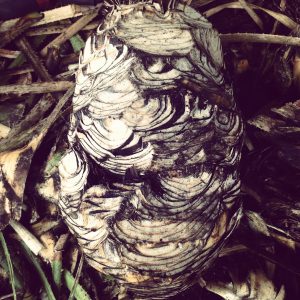
While I was stumbling through the world of North American agave spirits I happened upon the first example of a vertically integrated operation in Texas, one that is technically making a North American sotol from Dasylirion texanum grown, cooked, fermented, and distilled in Texas. We all knew it was going to happen. Native American tribes were already using Dasylirion texanum for some foodstuffs, possibly as an alcoholic beverage, but now it’s joined the world of craft spirits.
The man behind this creation is Mike Groener who owns and operates Genius Liquids in Austin, Texas and got a wild hair up his ass to create this sotol because everything lined up perfectly with the idea. As with many of these situations, he knew someone who knew someone who had a ranch where this elusive Dasylirion texanum was growing wild and they took it from there. As with most of these things, trial and error played a greater role than most would admit.
Genius Liquid’s “Desert Spirit Texas Sotol” is being released in early June so put your money down to see the latest, greatest, entry in the mezcal innovation race or just marvel at where this is all headed. Just ping Mike on Twitter to see if you can secure a bottle. He was kind enough to walk through his entire process.
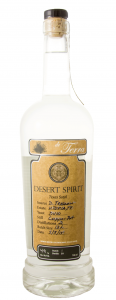
How did this whole idea of a North American sotol get started?
The basic premise, the thesis of any good spirit, is to take a plant or fruit from a specific region and process it with as light a touch as possible in order to preserve and concentrate the flavor. Mezcal is the perfect example, you seldom proof it down, you seldom add yeast. It’s a very natural process, a really basic formula, the best way to express terroir.
When it comes to spirits, I didn’t really start caring about what I was drinking until my mid-20’s,when I started to treat spirits like a fine meal. So I started with gin about four years ago. I dug into its wonderful history; there are so many different varieties, and it’s such an intriguing place to start.
Upon thinking about new frontiers in distilling, we really wanted to do something innovative. So, we created the De Terra Collection, an annual release of a Texas grown fermentable. Think of Parker’s Heritage releases as an example. The first release, Desert Spirit Texas Sotol, came together quite fortuitously.
The path to sotol started for me when I attended an Alamo Drafthouse tasting with Judah Kuper from Mezcal Vago. He did a private tasting with Bill Norris, the beverage director for Alamo Drafthouse, where you get to sample spirits and talk with the producer. Judah seemed like he fell into a serendipitous situation; he literally married into it. He had such a straightforward description of his passion for mezcal and the details of production. He made mezcal clear and easy to understand, with an unpretentious attitude.
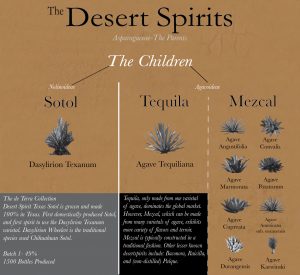
After that, I got intrigued by the process and started there. That was almost three years ago. I turned my wheels and thought a lot about what we could do in the United States that would reflect the terrain and local taste like Judah does with Vago in Oaxaca.
The opportunity arose 11-12 months ago when a bit of communication came down the pipeline. Justin Elliott, from Qui in Austin, said ‘hey, let’s go down to Utopia, TX and look at a property. Someone told me they have a lot of sotol plants.’ I didn’t know much about sotol, but read and researched as much as I could prior to the trip.
It’s about three-and-a-half hours outside of Austin in West Texas. It’s the only place I’ve been in Texas where there are plateaus and valleys, they narrowly resemble mountains. You drive through these valleys and end up in a small town called Utopia, TX. We met this guy, Travis Sutherland who has been running a music festival, Utopiafest, on this property and his family has owned the property for four or five generations. He had an understanding of the potential of the plants and contacted someone who knew someone.
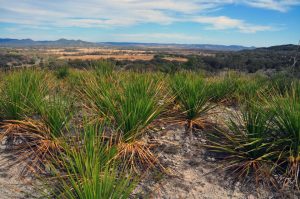
Travis says ‘Is this the plant you’ve been looking for?’ My first encounter was not particularly friendly. The plants are spiky, dense, and you think of them as having a prickly personality. They are a perfect metaphor for sotol in general. The texanum varietal is smaller, grows at lower altitudes, and has less available sugar because of the extreme summers we have in Texas.
I took a few of the plants home, chopped them up in the front yard, and cooked them to get a sense of their makeup. We didn’t know if we could even create a spirit from them, but, we just loved the idea that we could be the first in a space race to fully create something like an agave spirit outside of Mexico. I spent the next few weeks analyzing every facet of the piña; taste, smell, texture, color, etc.
What sort of mistakes did you make early on and what did you learn as you worked with the sotol?
At first I baked the sotol leaves to get a sense of their flavor and convert the starches but I ended up just drying them out completely. It took a few months and a few failed experiments in cooking, but ultimately I got a pressure cooker. It was a ‘Let’s see what this pressure cooking bit does.’ It’s a common practice in tequila, a shortcut for them, but for us it’s not a shortcut as much as a necessary evil to preserve and convert as much sugar as possible.
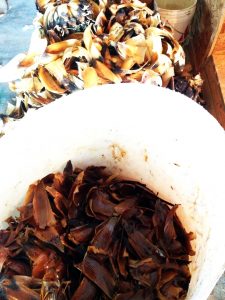
Over time as I pressure cooked the piñas there was a profound change in the plant. The smell and flavor transformed and it filled my house with this amazing rye scent. After my first successful cook, I peeled the cooked leaves, they are intensely fibrous, unctuous, and have a delicious grainy flavor. Ultimately I found a way to cook them consistently with a pressure cooker. However we did have months of testing with an underground pit. We still plan on exploring this in the near future.
How did you scale that up once you figured out the basics?
For now we use a series of pressure cookers to cook everything, but are planning on flying out a key mezcalero in Michoacan to help us build another pit. Typically the more grain you use in a liquid, the higher the sugar content will be – that’s a pretty common foundation in brewing and whiskey – but the more leaf material I added didn’t increase the sugar at all. We use now about 50 pounds per each fermenter. At around 7-10 pounds per piña, this means we use up to 10 piñas per fermenter since the core is removed along with some other woody pieces. To get about 55 gallons you need about 500 pounds of piñas.
Travis harvests, cooks, and then shreds the pinas in Utopia and delivers them to the distillery. We then steep the leaves for 48 hours and pump out the sugary brown liquid, which is then fermented for about 10 days. Each fermenter results in one ordinario run in our pot still. They don’t yield much. We get a maximum of ten liters of ordinario from each batch.
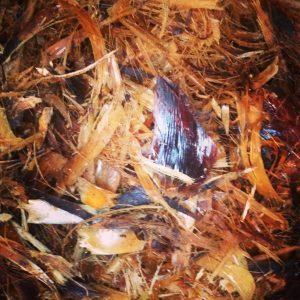
We did our first spirit run 2-3 weeks ago. It was the culmination of about 20 batch/ordinario runs. All stored in stainless and then blended to 49%. Bottles are here, labels coming soon [Genius has since received the labels and has bottled 13 liters of their first batch]. The distillate starts at 160 proof. We blended this batch down to our final ABV of 49%. That will vary slightly by batch.
It’s been non-stop, constant experimentation with failed ferments, different types of yeasts, and various cooking methods. Luckily these plants aren’t really worth anything outside of this purpose so we didn’t lose a lot of money, just time. Currently, these plants are absolutely wild, varying in ages and potentially well over 20 years old. The long term plan is to absolutely regrow the plants. Sotol is great in that the plants will grow back after being harvested. When harvesting, Travis isn’t disrupting the root system, so the plants are already starting to regrow. There’s a massive amount of land, and so far we haven’t even made a dent in what’s growing there.
I talked to many people about sotol production methods to get an understanding of how they ferment and distill. But the point is that we’re playing a different game. These plants are even more hostile to giving up their sugar.
I just want to learn from and pay homage to the the best. I was lucky enough to visit Aquilino’s palenque for a day and ask every possible question because the process and sharing of tradition is very important to me. [Aquilino is the maestro mezcalero who makes many of the Vago mezcals], if this Sotol is made with love like his mezcal then it will definitely work.
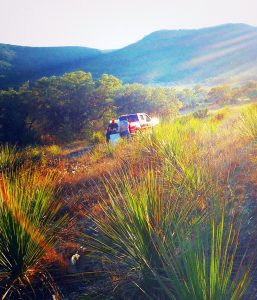
What are your tasting notes for your sotol?
The most interesting and perplexing drinking experience I’ve ever had was with the Del Maguey Tepextate. It was a funky roller coaster of pineapple, rubber band, sweetness, and vegetal notes. I can’t explain it but the sotol starts with a nice level of alcohol reminiscent of lowland tequila, it smells vegetal but when you taste it you’ll get some peach, mid-palate sweetness, and then minerality at the back of the palate with subtle rye notes. It’s a very unique drinking experience, akin to a Tobala.
What’s your release plan?
We’re releasing this for a few reasons. We want to be the first to do this completely domestically. A few other distilleries are trying agave spirits, but they’re all either using syrup or their fruit is processed in Mexico. This is a fine approach but we want to have control over every aspect of production.We’ll release our first two batches in early June.
Most of the bottles will be allocated to bars, but I think we’ll have a few at the distillery and via retail. I have a feeling that it will all be swiped up in Texas because we won’t be able to make much of it. But we’ll see what happens, perhaps expanded distribution to other states is on the horizon. We’ll adjust our process as we go. We could get a larger pine fermenter for instance. We’re aiming to charge $79-80/bottle. [If you’re interested in purchasing a bottle email your inquiry here.]
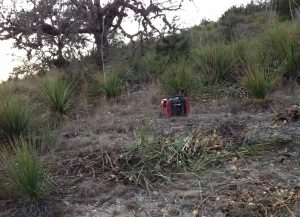
What else are you distilling?
We produce two gins as well, one normal strength at 45% and one navy strength at 57%. We have another gin project where we’re exploring Texas dry gin. This will probably be out late summer. We also have an oaked gin which we will release in June. We’re trying to do a speciality De Terra release every year. We’re looking into a pechuga next year using brisket and possibly a Rum Agricole.
Are you entirely focused on local expressions?
Yes, we caught wind of a large karwinski bundle in West Texas. I want to use stuff in Texas to highlight the terroir here, it’s unique. I think someone was trying to grow blue Weber, but no confirmation on that. I guarantee you that no one is growing karwinski in West Texas looking to cash in. Agave Americana also grows throughout Texas, but I haven’t found a big enough plot of it yet. Once I do though….
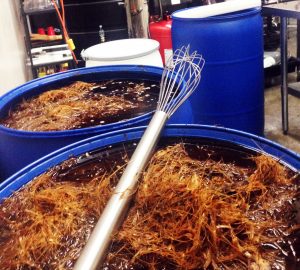
What about the fermentation: Are you using wild yeasts? Any other special steps to your process?
We are really transparent about what we do. We are in fact using a Epernay yeast, it’s an early champagne varietal [DV10]. We also get some infiltration from other proximate yeast. We use a copper pot still, we only distill up to 50 gallon batches. We invite anyone to come and take a look at our operations. We don’t currently have a tasting room because we’re in a really small spot, but we do host tours regularly. It’s not the wonderful aesthetic experience that I want to provide, but in time we’ll move to a larger facility.
The sotol has been a really difficult product to bring to fruition, but it’s a delicious spirit. I don’t know if anyone will care that we’ve done this, but at least we were the first. We’ve done it the right way and I think the media coverage is piquing people’s interest about agave spirits. By us doing this, the “some guys in Texas,’ story, we’ll hope to elevate the conversation around the agave portfolio. I think tasting is believing on this one.
—
All photos courtesy of Mike Groener.
Anyone interested in purchasing a bottle should contact Mike via email.

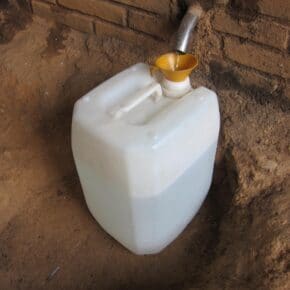

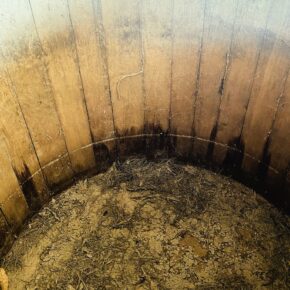








Leave a Comment